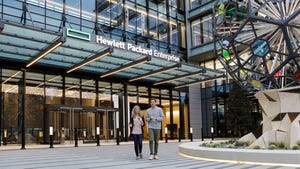September 9, 2024

The Moselle Valley in the district of Cochem-Zell in Germany has 2000 years of winegrowing behind it, we’re told, a job that is traditionally done by hand. The issue it has is a shortage of skilled workers to do that, and the risk of accidents on the steep slopes of the region.
The Smarter Weinberg project, funded by the Federal Ministry for Digital and Transport, was launched to tech-up regional wineries with 5G-based digitization and automation, and as part of that Deutsche Telekom was drafted to equip the ‘smart vineyard’ with a 5G campus network to underpin robotics, AI and image recognition applications.
One example of what this looks like practically is something called a ‘5G viticulture robot’, which is a robot equipped with a 5G router which drives automatically and self-controlled through the rows of vineyards in order to carry out soil cultivation or defoliation.
It’s also plastered with cameras so it can record the vines and their surroundings as it zips around, and on the basis of the recorded data, cultivation equipment – such as a flat share for weed removal – can be controlled in real time, we’re told.
Information on foliage volume and density as well as pest infestation and ripening conditions can also be extracted from the data. All that enables the human winegrowers to make decisions in how to optimise the use of water, fertiliser and crop protection products.
"Not much research has been done in the field of automation, especially for viticulture on steep slopes,” said Maria Wimmer, Professor of E-Government, Department of Computer Science, University of Koblenz. “The robotics platform that we developed in the project brings automation to the vineyard. But for the automation to work, we need a powerful computer and a powerful network. And for that, a private 5G campus solution is indispensable."
Kilian Franzen, winemaker at the Franzen winery, Bremm, added: "The robot supports us especially with time-consuming and heavy work such as mulching or defoliation. With the time we have gained, we can use the few skilled workers we have sensibly in those places where manual work still cannot be replaced."
The 5G network uses industrial frequencies in the range of 3.7 to 3.8 gigahertz licensed specifically for Weinberg, and researchers, companies and winegrowers have exclusive access to over 100 megahertz of upload bandwidth for sensor data from the cameras.
Mathias Poeten, Head of the Mobile Network at Deutsche Telekom, added: "5G is revolutionizing viticulture. Deutsche Telekom's 5G campus network creates the basis for this and is specially tailored to the needs of the robot in the vineyard. With our innovative solution in container format, we can ensure that the network moves with the winegrowers in the future and thus ensures the best connectivity at all times."
As well as enabling robot winegrowers to scoot around vineyards, the network will also be used for research into the interference and propagation properties of 5G signals in complex agricultural environments. The topography of the vineyards ‘poses a particular challenge for the complete and uniform illumination of the relevant areas’, explains the release, and so the research will analyse how objects such as wire installations, plants and foliage affect the quality of 5G signal transmission.
About the Author
You May Also Like










.png?width=300&auto=webp&quality=80&disable=upscale)


_1.jpg?width=300&auto=webp&quality=80&disable=upscale)